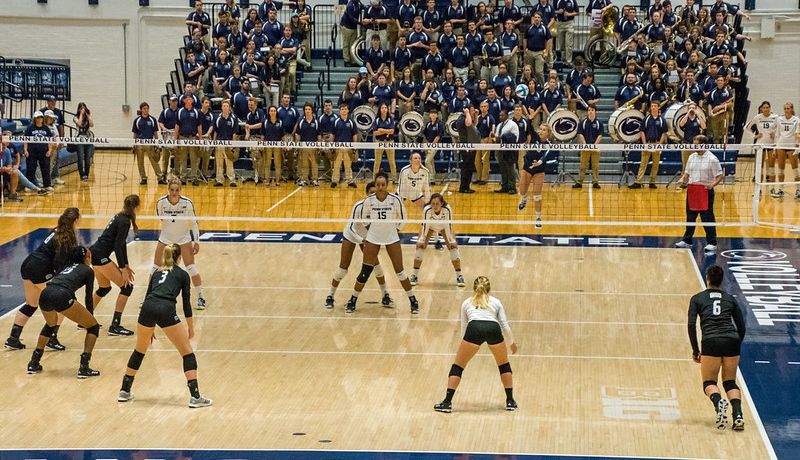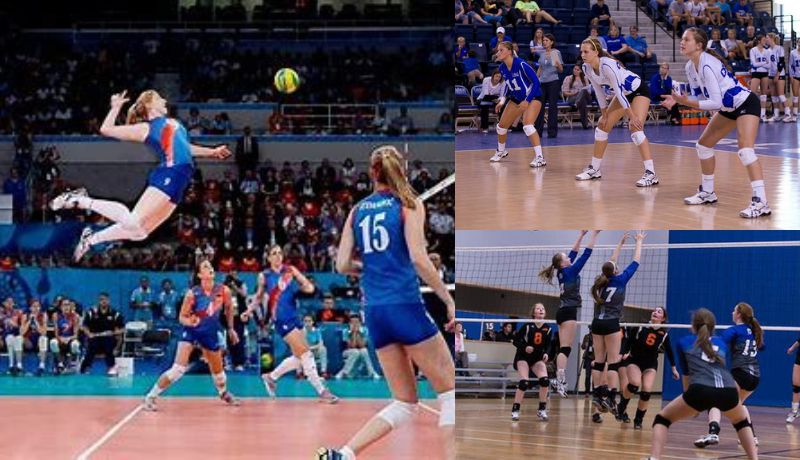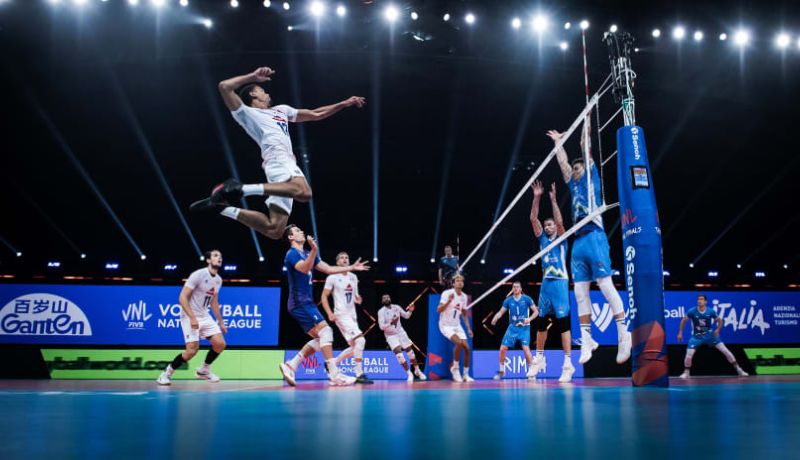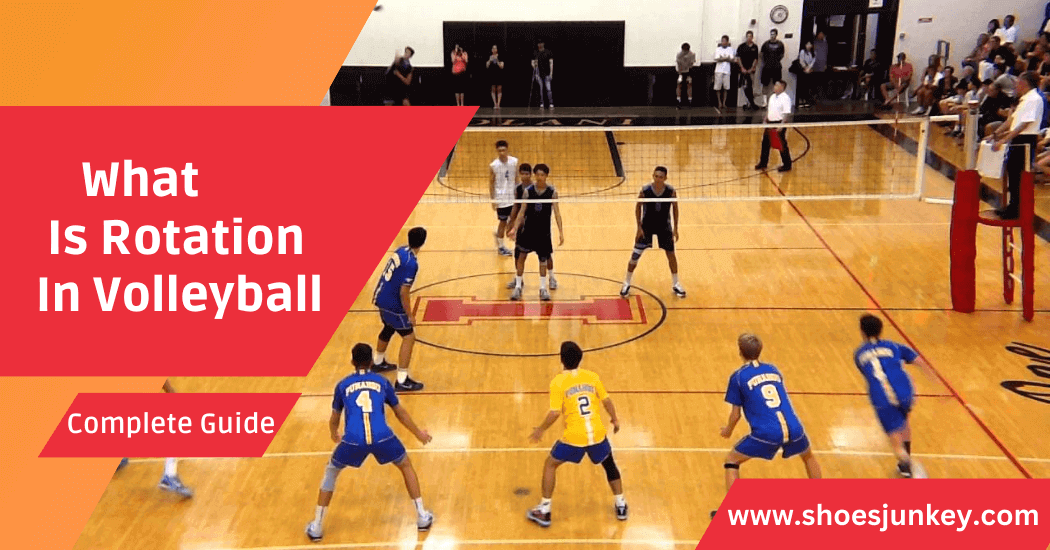What Is Rotation In Volleyball?
Volleyball is an exciting and dynamic sport that requires teamwork, skill and strategy. At the core of this fast-paced game is the concept of rotation, which affects both the basic rules of play and the tactical strategies teams employ to achieve victory.
In this article, we will explain the concept of rotation in volleyball, explore its key aspects and offer insightful tips and tricks for maximizing your team’s chances of winning. Whether you’re a newcomer to the sport or a seasoned player looking to take your game to the next level, our comprehensive guide to rotation has got you covered.
Introduction to Volleyball
Originating in the United States in 1895, volleyball has grown into an international sport enjoyed by millions worldwide. The game consists of two teams with six players each, facing each other across a 9-meter by 18-meter court divided by a net. The objective is for a team to score points by sending a ball flying over the net and landing in the opponents’ court area, or by forcing errors in the opponent’s play. In essence, players must work in unison to maintain control of the ball and secure points.

The Basics of Rotation in Volleyball
Rotation plays a vital role in the fundamental gameplay of volleyball, as it determines both the positions and roles of players on the court. Before we dive into the strategic and tactical aspects of rotation, let’s first review its basic rules and guidelines.
FIVB Regulations Regarding Rotation
The Fédération Internationale de Volleyball (FIVB) is the governing body responsible for establishing the official rules of volleyball. These rules dictate that players must rotate clockwise in their relative positions on the court after winning a rally in which the previous point was scored by the opposing team. The positions, numbered from 1 to 6, refer to the back-right, front-right, front-center, front-left, back-left and back-center areas of the court respectively.
When the team’s server wins a rally, players maintain their positions. The rotation ensures that each player gets to serve and play different positions throughout the game, highlighting the importance of well-rounded skills.
Common Rotation Mistakes and Violations
Despite its simplicity, it’s common to see rotation errors in matches. Inexperience, lack of focus, or communication breakdowns can lead to mistakes such as:
- Out of rotation: This violation occurs when players are not in their correct positions at the moment the ball is served. It’s essential for players to be vigilant and ensure they are in the right spot to avoid this common mistake.
- Serving out of order: When players lose track of the rotation order and the wrong player serves the ball, this is considered a violation. Keeping a mental note of the serving order can help prevent this error.
- Overlap: Overlap happens when players are out of their rotational order before or at the moment the ball is served. It’s crucial for players to maintain their relative positions to each other based on the rotation system.
- Illegal substitution: This violation is committed when a team makes more substitutions than allowed or when substitutions are not made according to the rules. Understanding the rules of substitution can prevent these mistakes.
These mistakes often result in penalties or loss of points. To avoid these common rotations mistakes and violations, teams should practice their formations, understand the rules and maintain strong communication throughout each game.
Strategic Aspects of Rotation

Strategic Aspects of Rotation
Beyond simply adhering to FIVB regulations, effective rotation strategies can significantly impact a team’s chance of success. Let’s explore how teams can use rotation to their advantage during different phases of the game.
Importance of Effective Rotation Strategies
A well-executed rotation strategy enables a team to maximize both individual and collective strengths. By purposefully placing players in positions of maximum effectiveness—both offensively and defensively—teams can better influence the flow of the game and create opportunities for decisive actions.
Rotation Tactics for Different Phases of the Game
Executing well-planned rotation tactics can greatly impact a team’s performance during serving, receiving and attacking phases. For instance, teams can strategize to serve from advantageous positions and target weaker opponents.
They can utilize rotation to set up effective blocks and defensive formations, as well as rotate players to take advantage of their individual strengths during attacks. Furthermore, maintaining strong communication and understanding each other’s strengths can enhance a team’s ability to execute successful rotations.
Challenges and Solutions
While the benefits of rotation are abundantly clear, teams often face challenges in implementing it effectively.
Miscommunication: One of the most common issues is miscommunication among team members, resulting in players moving out of sequence or occupying incorrect positions. To overcome this, teams should invest in comprehensive training to ensure all players understand the rotation strategy and prioritize clear, effective dialogue during games.
Positional Inefficiencies: This occurs when players are not optimally positioned to utilize their skills and abilities. For instance, having shorter players at the net or the team’s best server in a position where they rarely get to serve. To circumvent this, coaches should carefully analyze each player’s strengths and weaknesses and design rotation strategies that maximize individual skills and overall team performance.
Fatigue: Extended matches can cause players to lose focus and make errors in rotation. Proper conditioning and stamina training can help athletes maintain high performance levels throughout the game, reducing the likelihood of rotation mistakes.
Lack of Flexibility: Sometimes, players may struggle to adapt to different positions on the court. This can be addressed through diverse training sessions where players practice various roles, enhancing their versatility and understanding of different positions.
while rotation comes with its set of challenges, with proper training, strategic planning and effective communication, teams can make the most of this integral aspect of volleyball. By understanding the rules, avoiding common mistakes and violations and implementing well-planned rotation tactics, teams can elevate their performance and increase their chances of success on the court.
So, it is crucial for coaches and players alike to continuously work on improving their rotation skills to achieve their ultimate goal of winning matches. The key is to never underestimate the power of a well-executed rotation strategy and its impact on a team’s success in the game of volleyball. Overall, mastering rotation requires practice, communication and adaptability – but the results can be game-changing.
Rotation in Professional Volleyball

Professional volleyball teams are known for their intricate and effective rotation strategies, utilizing them as a powerful tool to gain an advantage over their opponents. These teams meticulously plan their rotations, taking into consideration the unique strengths and abilities of each player. They strategically position their strongest servers, attackers and blockers in areas where they can make the most impact. For instance, a team’s most powerful server is often placed to serve first, creating immediate pressure on the opposition.
These teams also carefully analyze their opponents’ rotation strategies, identifying potential weak spots to exploit. For instance, they might target their serves at weaker receivers, or maneuver their best blockers to confront outstanding attackers. Furthermore, they are proficient in utilizing complex rotation patterns and quick transitions, making their movements unpredictable and challenging for opponents to defend.
Professional teams often have specialized coaches and statisticians who study game footage in detail to fine-tune their tactics. They work together to devise and refine rotation strategies based on game analysis and player performance data, ensuring the team is well-prepared to face any opposition.
It’s also worth noting that these teams prioritize rotation drills in their training sessions. They understand that effective rotation requires not only strategic acumen but also impeccable timing, coordination and communication. Therefore, they invest significant time and effort in honing these aspects, ensuring each player knows their role and positioning at every point in the rotation.
In essence, professional volleyball teams leverage rotation as a critical competitive edge. Through careful planning, analysis, practice and execution, they transform rotation from a rule-bound necessity into a dynamic, game-shaping strategy. This commitment to mastering rotation is a testament to its vital role in high-level volleyball and a clear illustration of how it can be utilized to gain a competitive advantage.
Key Aspects, Tips and Tricks for Effective Volleyball Rotation
- Understand Your Team: Knowing your team’s strengths and weaknesses is vital in effective rotation. Align your rotation strategy to maximize the strengths and minimize the weaknesses in your team.
- Practice Makes Perfect: Regular drills focusing on rotation strategies are key. They enhance coordination, understanding of each player’s role and position and improve overall execution.
- Clear Communication: Effective rotation relies heavily on clear and consistent communication among team members. Create a common language or signals to enhance in-game communication.
- Variety is Key: Implementing a variety of rotation strategies can make your team unpredictable and difficult to counter. Experiment with various formations and strategies in practice games to see what works best.
- Study Your Opponent: Analyzing your opponent’s rotation strategy can give you a competitive edge. Understand their set up and design your strategies to exploit any observed weaknesses.
- Encourage Positional Flexibility: Players who are adaptable to different positions increase the possibilities for your rotation strategy. Encourage players to learn and be comfortable in multiple positions.
- Keep the Team’s Morale High: Volleyball is a team sport and the team’s spirit has a great impact on overall performance. Encourage team building activities and maintain a positive environment.
Remember, there’s no one-size-fits-all approach to volleyball rotation. It’s a blend of strategy, technique and teamwork. Regularly revisit and revise your strategies to keep up with your team’s growth and changes in the game.
Summing Up:
To sum it up, utilizing rotation to its best potential is key for any volleyball team. Rotation ensures that everyone is in the right spot on the court at all times and improves ball control when players are limited to moving into a greater number of available positions. The practice of having players rotate reinforces the motions required for successful play so players can better understand which roles they may need to take up and better anticipate where their teammates may be headed.
Most important of all, using rotation will boost team morale as each player has an opportunity to make a positive impact throughout the match. With rotation, every player feels valued and important for what they contribute while playing as part of a larger team. So remember: when playing volleyball, use your skills creatively and rotate well!







